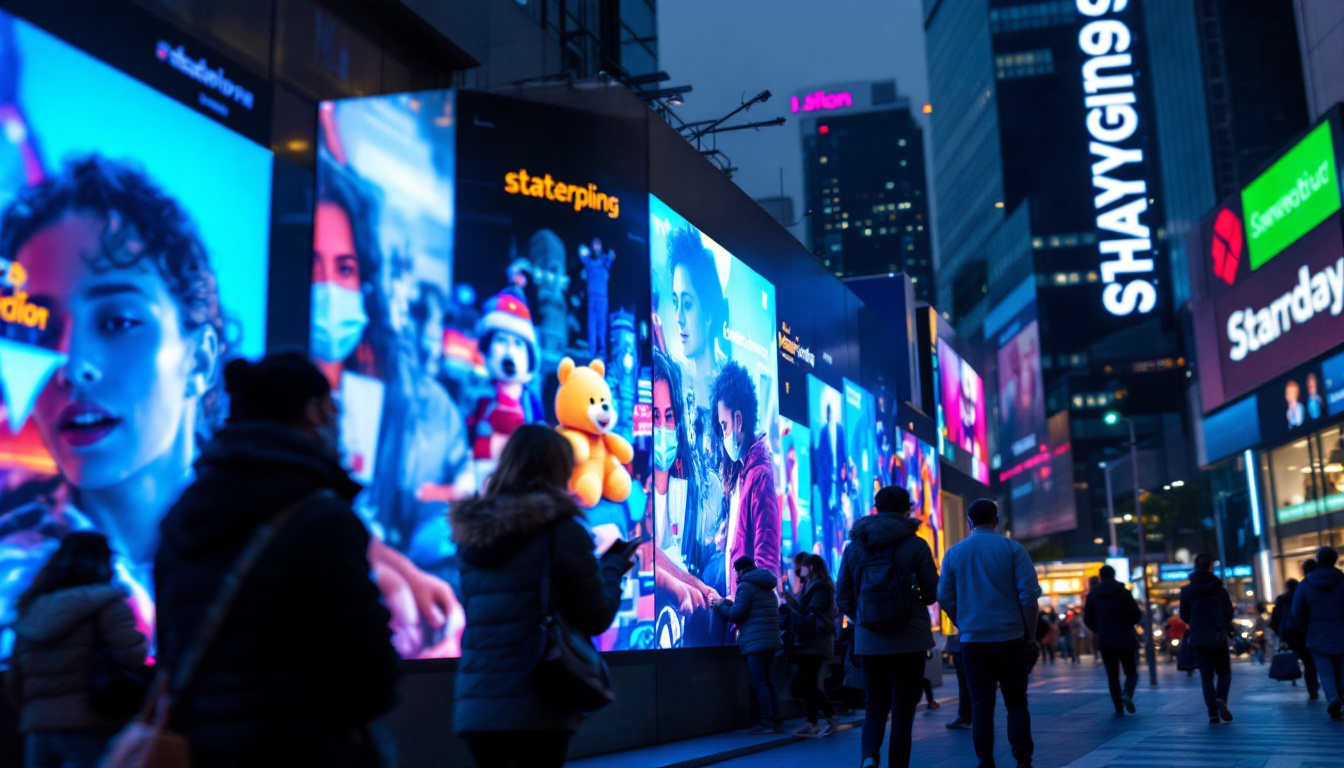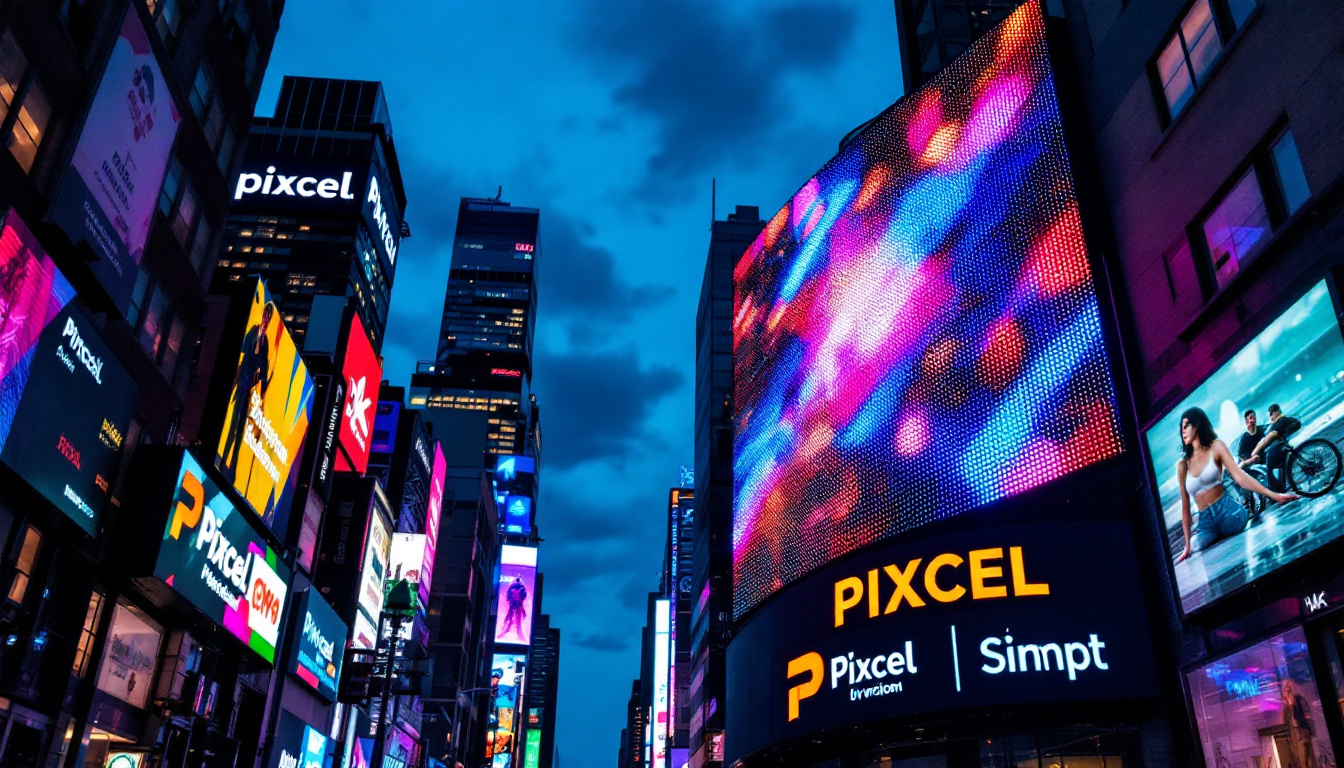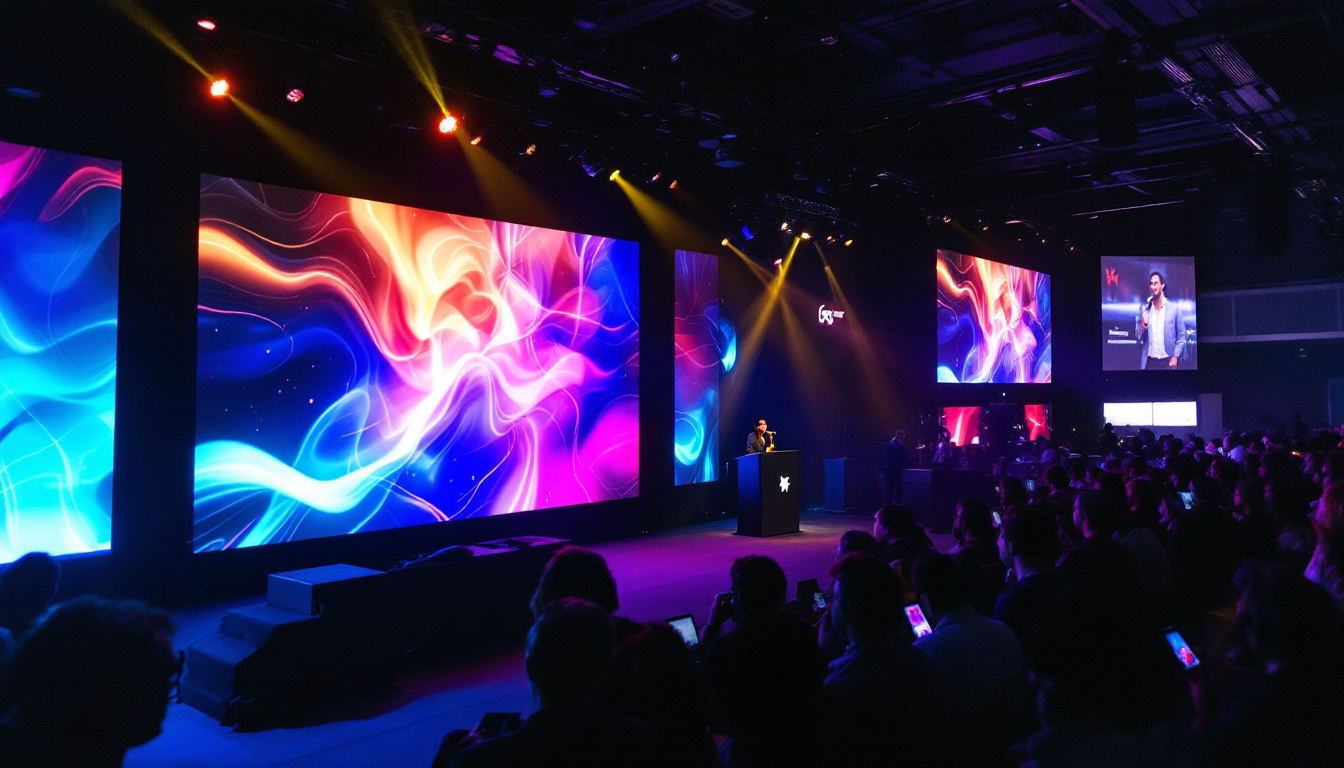In the modern age of technology, churches and religious organizations are increasingly adopting innovative solutions to enhance their worship experience. One such solution is the use of LED displays. These vibrant screens serve not only as a means of communication but also as a tool for engagement and inspiration within the community. This article delves into the various aspects of LED displays, exploring their benefits, applications, and considerations for churches looking to implement this technology.
Understanding LED Technology
LED, or Light Emitting Diode, technology has revolutionized the way visual information is presented. Unlike traditional lighting, LEDs are energy-efficient and offer a longer lifespan, making them an attractive option for various applications, including church displays.
How LED Displays Work
At the core of LED technology is the semiconductor material that emits light when an electric current passes through it. This process not only allows for bright and vivid colors but also enables the creation of complex images and videos. LED displays can be categorized into two main types: direct view and rear projection. Direct view displays are composed of numerous small LED modules that come together to form a larger screen, while rear projection displays utilize a projector to display images on a screen from behind. The versatility of LED technology means that it can be tailored for various environments, ensuring that whether it’s a small church gathering or a large outdoor event, the visuals remain sharp and engaging.
Types of LED Displays
Churches can choose from various types of LED displays based on their specific needs. Indoor LED displays are designed for use within the church building, often featuring high-resolution screens that provide clear visuals even in well-lit environments. Outdoor LED displays, on the other hand, are built to withstand the elements and are typically used for signage or announcements outside the church. These outdoor displays often come with protective casings to guard against rain, snow, and UV rays, ensuring that the messages remain visible and vibrant regardless of the weather conditions. Furthermore, some outdoor models are equipped with sensors that adjust brightness levels according to ambient light, enhancing visibility during both day and night.
Advantages of LED Displays
The advantages of LED displays extend far beyond their visual appeal. They are energy-efficient, consuming significantly less power than traditional display technologies. Additionally, their durability ensures that they can withstand the rigors of daily use, making them a cost-effective solution for churches. The ability to display dynamic content, such as videos, animations, and live feeds, further enhances their utility in engaging congregants. This interactivity can be particularly beneficial during services, allowing for real-time updates, song lyrics, and sermon notes to be displayed seamlessly. Moreover, the low maintenance requirements of LED technology mean that churches can focus more on their community activities rather than worrying about frequent replacements or repairs, thus maximizing their resources and outreach efforts.
Applications of LED Displays in Churches
LED displays have a wide range of applications within church settings. From enhancing worship services to providing information to the congregation, these displays can play a pivotal role in modern church operations.
Enhancing Worship Services
One of the primary applications of LED displays in churches is to enhance worship services. By displaying song lyrics, scripture passages, and sermon notes, LED screens facilitate a more engaging worship experience. This visual support allows congregants to follow along easily, fostering a sense of community and participation.
Moreover, churches can utilize LED displays to showcase multimedia presentations, including video clips and slideshows that complement the sermon. This integration of technology into worship services can help convey messages more effectively and resonate with a diverse audience. For instance, a church might display a powerful video testimony that illustrates the theme of the sermon, creating a more immersive experience that can touch hearts and inspire action. Additionally, the ability to incorporate live feeds from other locations or events can create a sense of unity among congregants, even if they are physically apart.
Communication and Announcements
LED displays serve as powerful communication tools within the church. They can be used to announce upcoming events, share important messages, and provide information about community outreach programs. By placing LED screens in high-traffic areas, churches can ensure that vital information reaches congregants effectively.
Additionally, these displays can be programmed to update in real-time, allowing churches to share news and announcements as they happen. This immediacy can be particularly beneficial during special events or emergencies, ensuring that the congregation stays informed. For example, during a severe weather alert, an LED display can quickly inform attendees about safety protocols or changes to scheduled services, thereby enhancing the church’s role as a reliable source of information in times of need. Furthermore, the use of dynamic graphics and animations can capture attention more effectively than traditional bulletin boards, making announcements more appealing and memorable.
Community Engagement and Outreach
Beyond internal communication, LED displays can also play a significant role in community engagement and outreach. Churches can use outdoor LED displays to promote events, services, and community initiatives, reaching a broader audience beyond their immediate congregation. This visibility can attract new visitors and foster a sense of community involvement.
Furthermore, churches can collaborate with local organizations and businesses to display community messages or support charitable causes. This not only enhances the church’s presence in the community but also demonstrates a commitment to social responsibility. For example, a church might partner with a local food bank to promote a food drive, using the LED display to highlight donation needs and collection times. Such initiatives not only serve the community but also encourage congregants to engage actively in service, reinforcing the church’s mission of outreach and compassion. Additionally, by showcasing testimonials from community members who have benefited from these initiatives, churches can further inspire others to get involved and make a difference.
Considerations for Implementing LED Displays
While the benefits of LED displays are numerous, there are several considerations that churches should keep in mind when planning to implement this technology. Understanding these factors can help ensure a successful integration that meets the needs of the congregation.
Budget and Costs
Investing in LED displays can represent a significant financial commitment for churches. It is essential to establish a clear budget that encompasses not only the initial purchase and installation costs but also ongoing maintenance and operational expenses. Churches should explore various options, including financing plans or grants, to make this investment more manageable.
Additionally, it is crucial to consider the long-term savings associated with energy-efficient LED technology. Over time, the reduced energy consumption can offset some of the initial costs, making LED displays a more economical choice in the long run.
Location and Visibility
The placement of LED displays is another critical consideration. Indoor displays should be positioned in areas where they are easily visible to congregants, such as near the stage or in the main worship area. Outdoor displays should be strategically placed to maximize visibility from busy roads or sidewalks, ensuring that announcements reach the intended audience.
It is also important to consider the size and resolution of the display. A larger display may be necessary for outdoor settings to ensure readability from a distance, while indoor displays can focus on higher resolution for detailed visuals.
Content Management
Effective content management is vital for maximizing the impact of LED displays. Churches should develop a content strategy that outlines what types of information will be displayed, how often updates will occur, and who will be responsible for managing the content.
Utilizing content management software can streamline this process, allowing for easy updates and scheduling of content. Training staff or volunteers on how to use this software effectively can further enhance the display’s utility and ensure that it remains current and relevant.
Best Practices for Using LED Displays in Churches
To fully harness the potential of LED displays, churches should adhere to best practices that enhance their effectiveness and ensure a positive experience for congregants.
Keep Content Relevant and Engaging
Content is king when it comes to LED displays. It is essential to keep the information displayed relevant and engaging to capture the attention of the audience. This can include a mix of announcements, inspirational quotes, and multimedia content that aligns with the church’s mission and values.
Regularly updating content and rotating messages can also help maintain interest and encourage congregants to engage with the display. Utilizing high-quality visuals and clear, concise text will further enhance the overall experience.
Incorporate Interactive Elements
Incorporating interactive elements into LED displays can significantly enhance engagement. This could include live polls, social media feeds, or even interactive sermon notes that allow congregants to participate actively during services.
By fostering interactivity, churches can create a more dynamic worship experience that resonates with a tech-savvy audience, encouraging participation and community building.
Evaluate and Adapt
Finally, churches should regularly evaluate the effectiveness of their LED displays and be open to adapting their approach based on feedback from congregants. This could involve conducting surveys or holding discussions to gather insights on how the displays are being received.
By staying responsive to the needs and preferences of the congregation, churches can ensure that their LED displays continue to serve their intended purpose and enhance the overall worship experience.
Conclusion
LED displays represent a powerful tool for churches seeking to enhance their communication, engagement, and worship experiences. By understanding the technology, exploring its applications, and considering key factors for implementation, churches can successfully integrate LED displays into their operations.
As technology continues to evolve, embracing innovative solutions like LED displays can help churches connect with their congregations in meaningful ways. By investing in this technology, churches not only enhance their worship services but also strengthen their presence within the community, fostering a vibrant and engaged congregation.
In a world where visual communication is becoming increasingly important, LED displays offer a unique opportunity for churches to share their message, inspire their congregants, and make a lasting impact both within their walls and beyond.
Illuminate Your Worship with LumenMatrix
Ready to transform your church’s worship experience and community engagement? LumenMatrix is at the forefront of LED display innovation, offering a wide array of solutions tailored to your needs. From Indoor and Outdoor LED Wall Displays to specialized options like Vehicle, Sports, and Floor LED Displays, our technology is designed to captivate and inspire. Embrace the future of visual communication with our Custom, All-in-One, and Transparent LED Displays, and see how LumenMatrix can help your church make a profound impact. Check out LumenMatrix LED Display Solutions today and take the first step towards a brighter, more engaging worship experience.































